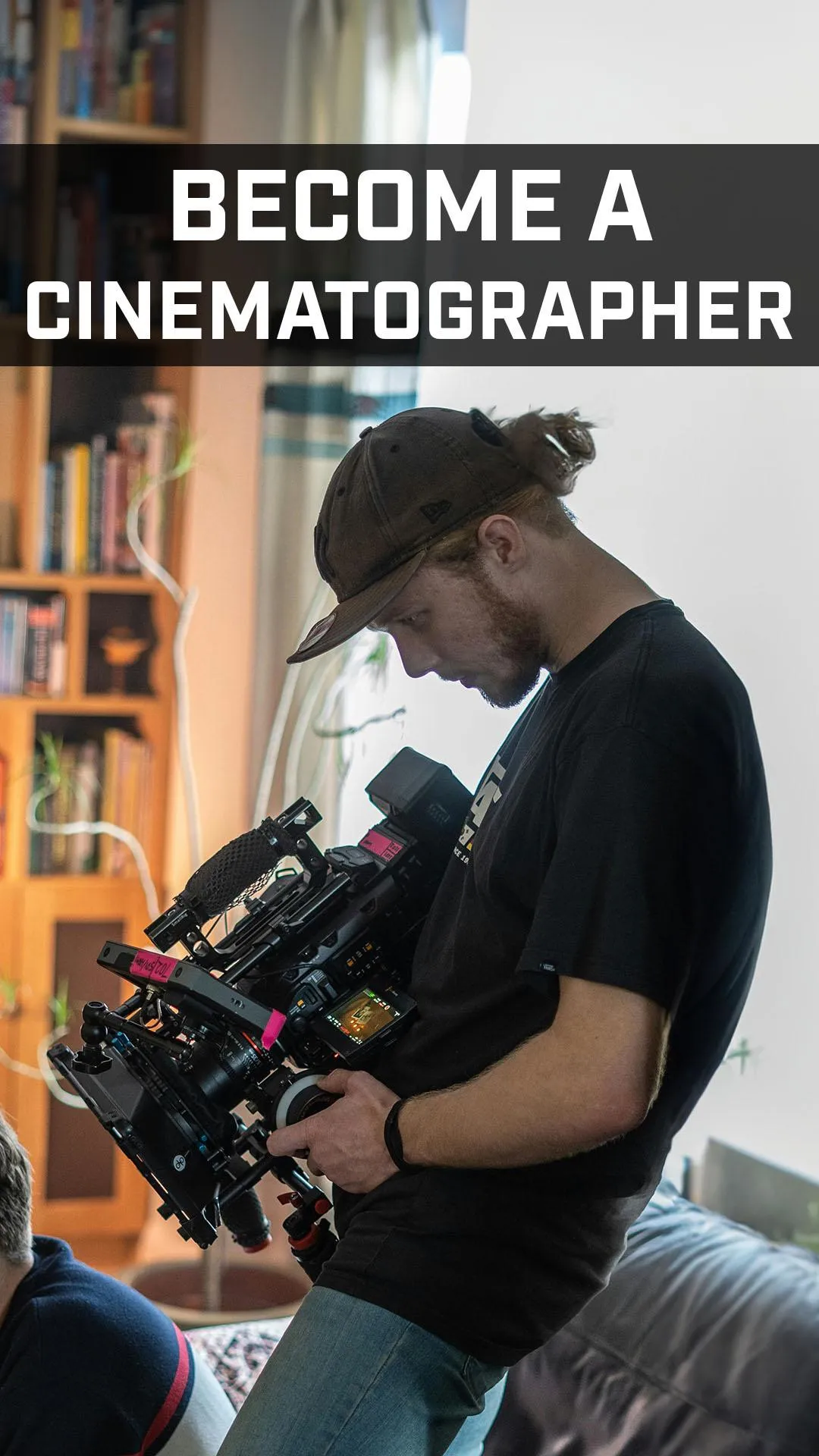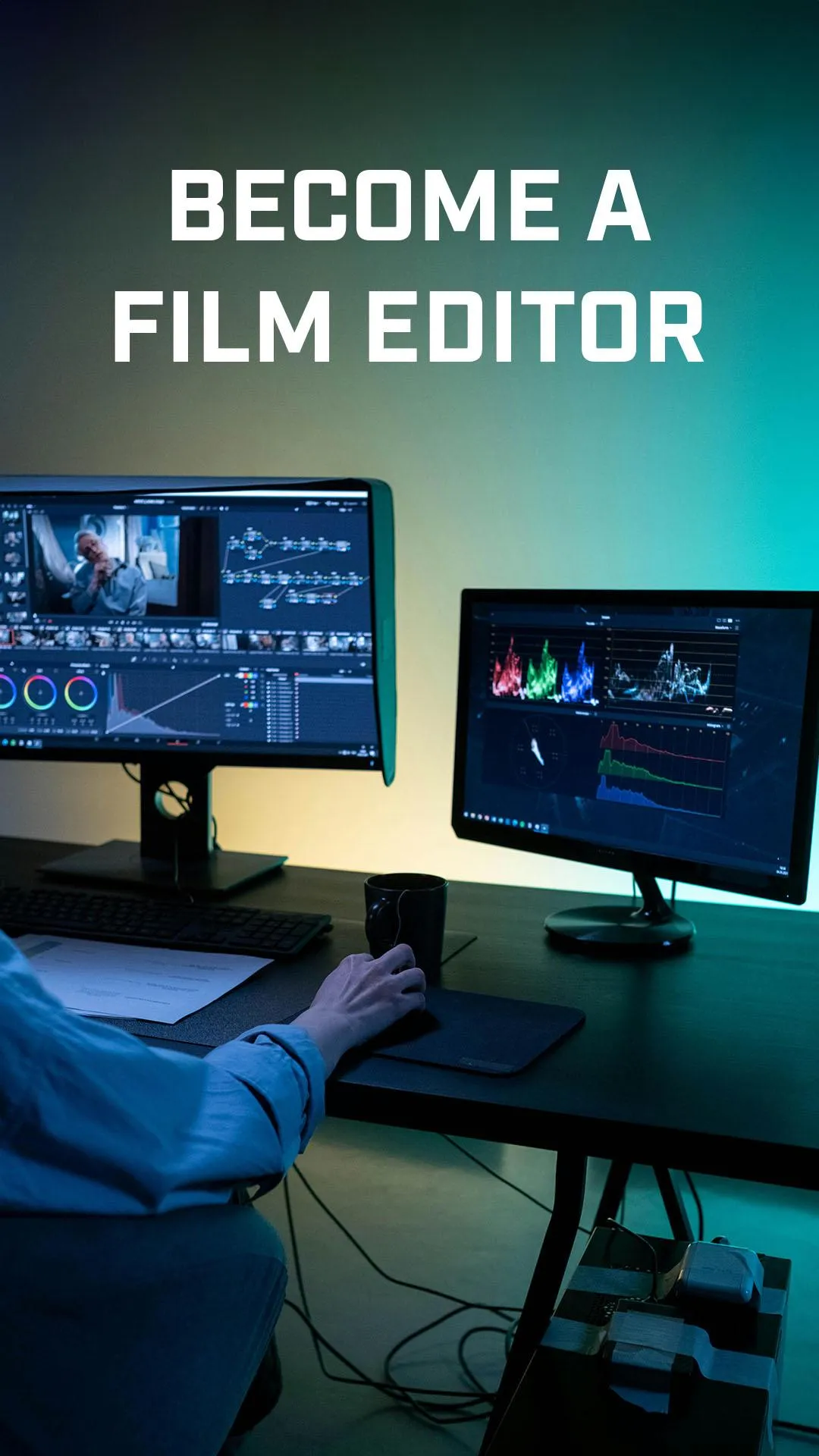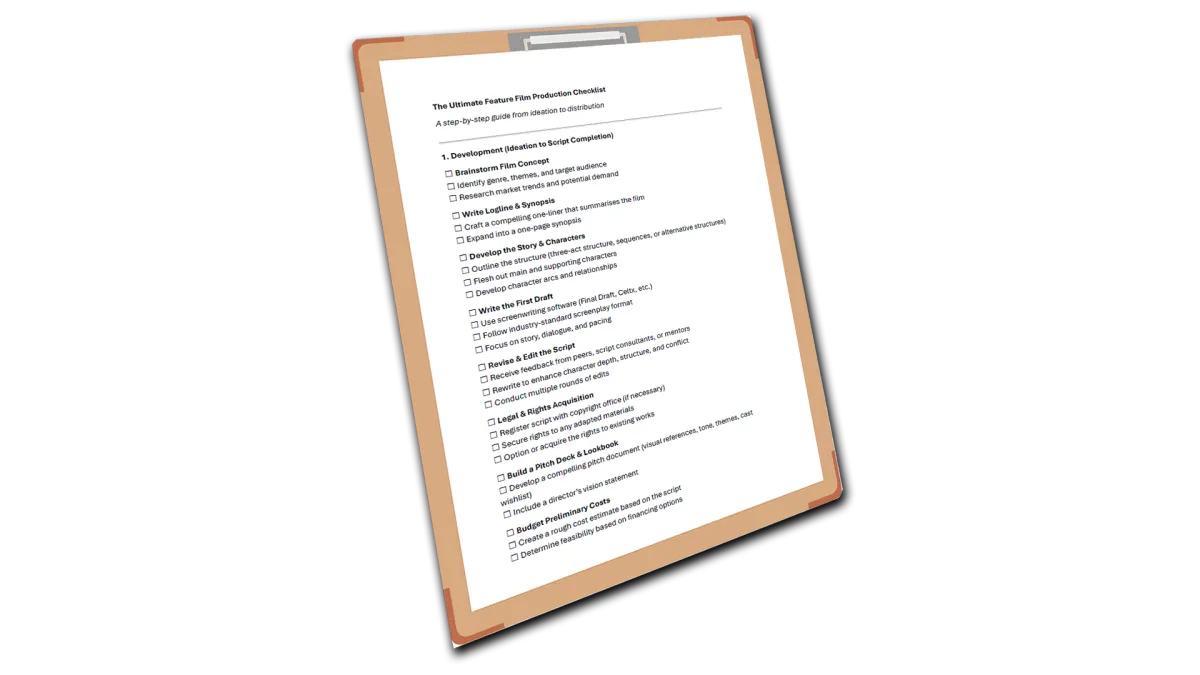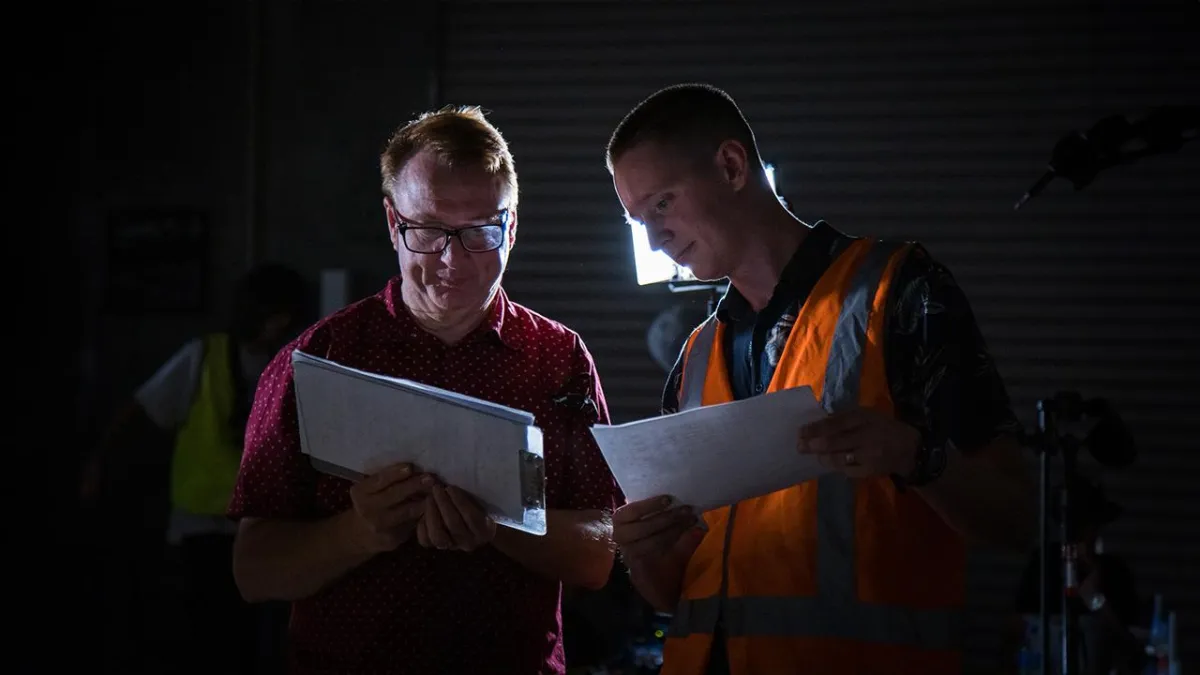Enter the Forbidden World of Filmmaking
Online Courses for Filmmakers
CHOOSE YOUR LEARNING PATH



COMING SOON



GODMODE PERKS
The following are included in a GODMODE Membership:

Private community access
Join an exclusive network of filmmakers to share ideas, get feedback, and collaborate.
Connect with like-minded creators and grow together.

Regular giveaways
Enjoy exclusive giveaways, including scriptwriting tools and other filmmaking essentials.
Being in Godmode means more than learning—it means getting the tools to create.

Step by step checklists
Stay on track with detailed checklists for every stage of filmmaking. From pre-production to post-production, these guides ensure you never miss a step.

Access to future content
Get all current and future courses, tutorials, and resources at no extra cost. With Godmode, you’ll always have access to the latest in filmmaking.

E-books + templates
Access e-books on filmmaking essentials and ready-to-use templates like scripts, budgets, schedules, and shot lists.
Save time and stay organised with resources designed to streamline your projects.

30 Day Short Film Challenge
Take on the ultimate filmmaking challenge!
This step-by-step guide helps you plan, shoot, and edit your own short film in just 30 days.
Perfect for beginners or pros looking to sharpen their skills and complete a project fast.
GODMODE PRICING:
$1500+ VALUE
For a limited time offer:
Lifetime Membership
$397 (Norm. $797)
One Upfront Payment
Lifetime Access to ALL Content
Billed ONE time only
Stream all 50+ Videos
Access FUTURE Videos
Regular Giveaways
Private Community Access for LIFE
E-books + Templates
Step-by-step checklists
30 Day Refund Policy
SEE THE FULL CURRICULUM
FILM HISTORY & THEORY
INCLUDED
Intro to Film History & Theory
First Moving Picture
The Invention of the Cinematograph
Birth of Narrative Films
Silent Film Era
Introduction of Sound
Introduction of Colour
Studio System and the Golden Age of Hollywood
European Art Cinema and the French New Wave
The Blockbuster Era
The Birth of Independent Cinema
The Digital Revolution
The Rise of Streaming Platforms and Decline of Traditional Distribution
International Cinema
The Future of Filmmaking

BECOME A FILM DIRECTOR
INCLUDED
Tools & Resources:
Scene Breakdown Sheet
Module 1:
Intro to directing
The director's vision
Script analysis - Reading a Script Like a Director
Module 2:
Story structure
Module 3:
Casting & auditions
Blocking & staging
Visual storytelling
Communicating with actors
Result directing
Using verbs
COMING SOON
Module 1:
What Does a Film Director Do?
The Three Phases of Directing
Essential Skills Every Director Needs
Breaking Into the Industry as a Director
Module 2:
Pacing
Story arcs
Creating a Director's Notebook
Breaking Down a Scene for Direction
Module 3:
Working with Screenwriters
Building a Shot List
Storyboarding & Pre-Visualisation
The Importance of Rehearsals
Understanding the Role of the Director on Set
Module 4:
Directing on set
Collaborating with HODs
Directing with limited resources & problem solving on set
Handling feedback & criticism
Module 5:
Understanding Cameras Angles & Framing
The Power of Camera Movement
Directing for Emotion: The Psychology of Framing
Lighting & Mood: Working with the DP
Directing for Different Genres
Module 6:
The Director's Daily Workflow on Set
Communicating with Your Crew
Problem-Solving Under Pressure
How to Keep Your Crew & Cast Motivated
Making Quick Decisions on Set
Module 7:
The Director-Editor Relationship
Understanding the Basics of Editing
Giving Effective Editing Notes
Sound Design & Music Choices
Colour Grading & Final Touches
Module 8:
Getting Your Film Seen: Festivals & Distribution
Building Your Directing Portfolio
Networking & Collaborating in the Industry
How to Get Hired as a Director
The Director's Journey: Long-Term Career Growth

BECOME A SCREENWRITER
INCLUDED
Film history & theory
Intro to screenwriting
Choosing a format
Story structure
Developing compelling characters: protagonist
How to fix a boring protagonist
Developing compelling characters: antagonist
Developing compelling characters: deuteragonist
Basic script formatting
Craft effective dialogue
How to use subtext
Creating conflict and tension
Visual storytelling
Establish genre & tone
Adapting source material
Handling feedback & revisions
Pitching & selling your script

BECOME A FILM PRODUCER
INCLUDED
Tools & Resources:
Feature Film Production Checklist - A Complete Step-by-Step Guide
Call Sheet Template
Scene Breakdown Sheet
Module 1:
Intro to Film Producing
What do Film Producers do?
Different Types of Film Producers
5 Stages of Film Production
Essential Skills for a Successful Producer
Module 2:
Finding and Developing a Strong Film Idea
How to make a call sheet
Module 3:
How to add a film to IMDb
COMING SOON
Module 2:
Breaking Down the Script
The Art of Film Financing
Creating a Business Plan for Your Film
Acquiring Rights and Legal Basics
Budgeting 101: Estimating Production Costs
Building a Production Schedule
Hiring Your Key Crew
Casting and Working with a Casting Director
Location Scouting and Permits
Production Insurance & Risk Management
Module 3:
The Producer’s Role on Set
Understanding Unions and Guilds
Scheduling and Call Sheets
Handling On-Set Challenges
Managing Production Costs and Controlling the Budget
The Chain of Command on a Film Set
Module 4:
Post-Production Workflow for Producers
Working with Editors, Composers, and VFX Teams
Sound Design and ADR
Colour Grading & Finishing Your Film
Test Screenings and Feedback
Module 5:
How to Get Your Film into Festivals
Film Distribution: Theatrical, Streaming, and VOD
Self-Distribution vs. Traditional Distribution
Marketing and Promoting Your Film
Understanding Film Sales and Royalties
Pitching Your Next Project & Building Industry Relationships

BECOME A CINEMATOGRAPHER
INCLUDED
Tools & Resources:
Cinematography Essentials eBook
Shot List Template
Scene Breakdown Sheet
Module 1:
Types of Cameras
What is an F-Stop?
COMING SOON
Intro to cinematography
What does a cinematographer do?
Getting started with cameras and lenses
Lighting basics
Composition and framing
Camera movement and techniques
Working with directors and crew
Essential gear for beginners
Understanding exposure and focus
Shooting for different scenes and environments
Colour theory and cinematic styles
Troubleshooting common challenges
Post-production basics for cinematographers
How to build your skills and start your career

BECOME A FILM EDITOR
COMING SOON
Module 1:
Intro to editing
What Does a Film Editor Do?
The Evolution of Film Editing
Essential Skills Every Editor Needs
Understanding the post-Production Workflow
Overview of Editing Software
Module 2:
Setting Up Your Editing Workspace
Importing & Organising Footage
Basic Editing Tools & Techniques
Using Keyboard Shortcuts to Edit Faster
Syncing Audio and Video
Module 3:
The Art of Pacing and Rhythm
How to Cut for Emotion and Impact
The Power of the Montage
Cutting Dialogue Scenes
Creating Suspense and Tension in Editing
Editing Action Scenes
Match Cuts, Jump Cuts, and Invisible Cuts
Module 4:
Working with Multiple Camera Angles (Multicam Editing)
Green Screen & Chroma Key Editing
Using Slow Motion & Speed Ramping
Split Screens and Creative Transitions
Editing for Comedy vs. Drama vs. Horror
Module 5:
The Important of Sound in Film Editing
Cleaning Up Audio & Removing Noise
Adding Sound Effects for Impact
Music and Score: How to Choose the Right Track
Sound Design & Layering Audio
Module 6:
Basic Colour Correction Techniques
Introduction to Colour Grading
Using LUTs and Colour Wheels
Matching Shots for Consistency
Module 7: Fine-Tuning the Final Cut
Rendering & Exporting Settings
Delivering the Final Product
Module 8:
Editing for Social Media & Online Content
Editing for Commercials & Music Videos
Breaking Into the Film Industry as an Editor
Building an Editing Reel & Portfolio
How to Work with Directors & Producers

BECOME A SOUND DESIGNER
COMING SOON
Module 1:
Intro to sound design
The Basics of Sound in Film
The Psychology of Sound
Essential Tools of a Sound Designer
Famous Sound Designers & Their Techniques
Module 2:
The Science of Sound
Mono vs. Stereo vs. Surround Sound
How Microphones Work & Their Characteristics
Recording Sample Rates & Bit Depth
Signal Flow & Audio Routing
Module 3:
Recording Clean Dialogue on Set
Boom vs. Lavalier: Which Mic to Use?
Field Recording Techniques
ADR (Automated Dialogue Replacement)
Foley Recording: Creating Sound Effects by Hand
Module 4:
Editing Dialogue for Clarity
Layering Sound Effects for Realism
Time Stretching & Pitch Shifting
Reverb & Space: Creating a Sense of Place
Using EQ to Shape Audio
Understanding Compression & Dynamics
Module 5:
How to Build a Scene with Sound
Using Ambience to Set the Mood
Soundscapes in Different Genres
Creating Sci-Fi & Fantasy Sounds
Using Silence Effectively
Module 6:
Working with Synthesizers & Samplers
Granular Synthesis & Sound Manipulation
Distortion & Sound Warping
Creating Custom Sound Effects from Scratch
Design Sounds for Monsters, Robots, and Creatures
Module 7:
The Relationship Between Music & Sound Design
Choosing the Right Score for a Scene
How to Mix Sound & Music Together
Using Sound to Enhance Emotional Beats
Module 8:
Balancing Dialogue, Music and Effects
5.1 & 7.1 Surround Sound Mixing
Noise Reduction & Audio Cleanup
Finalising a Sound Mix for Film
Module 9:
How to Get Started as a Sound Designer
Building a Sound Design Portfolio
Networking & Finding Clients
Working with Directors & Editors
The Future of Sound Design

WHO WE ARE and WHERE WE COME FROM


Hi, I’m Adon Blake, a filmmaker based in Perth, Western Australia. My passion for storytelling began in Year 5, but it wasn’t until I held a video camera at 14 that my dream started taking shape. Back then, I made random, often absurd videos with my siblings — the kind that might raise eyebrows today! Those playful beginnings turned into a serious goal: becoming a filmmaker.
Like most aspiring filmmakers, I had no idea where to start. I studied film at North Metropolitan TAFE (formerly Central Institute of Technology) and earned a Diploma of Screen Studies. My projects were ambitious for my level, and after graduating, life pulled me in other directions until 2017, when I finally made my first short film outside of studies.
In 2018, I teamed up with my friends Greg Pereira and Jack Stevenson to create Sheet Films, a series of comedic skits. We met every couple of weeks, came up with crazy ideas, and filmed them just for fun and to learn the craft. These collaborations kept the passion alive and laid the groundwork for bigger projects.
In 2019, I began work on my first feature film, Heretics, starring Chloe-Jean Vincent. Inspired by a painting I saw at the Art Gallery in Melbourne, the story is set in 10th Century Europe and follows a peasant family’s struggle to survive a massacre by crusaders. Filmed entirely in regional Western Australia, the production spanned three years due to challenges like COVID and seasonal changes. Despite setbacks, the film was completed in 2022, screened worldwide, and taught me invaluable lessons about filmmaking, life, and self-worth.
That experience inspired me to share my journey and help others like me who didn’t know where to start. I launched Film Industry Gateway to teach aspiring filmmakers and provide behind-the-scenes insights into the filmmaking process.
Since 2023, I’ve focused on creating courses, free resources, and content to inspire others to follow their filmmaking dreams. My goal is simple: I want to make movies and help others make movies.
I believe the impossible is just something waiting to be achieved. When someone says it can’t be done, I see that as a challenge to prove otherwise. To me, filmmaking is about defying limits, having fun, and showing others that their creative dreams are within reach.
As Jim Carrey said, "You can fail at what you don’t want to do, so you might as well do something you love."
Let’s prove together that it can be done.



Facebook
Instagram
Youtube
TikTok